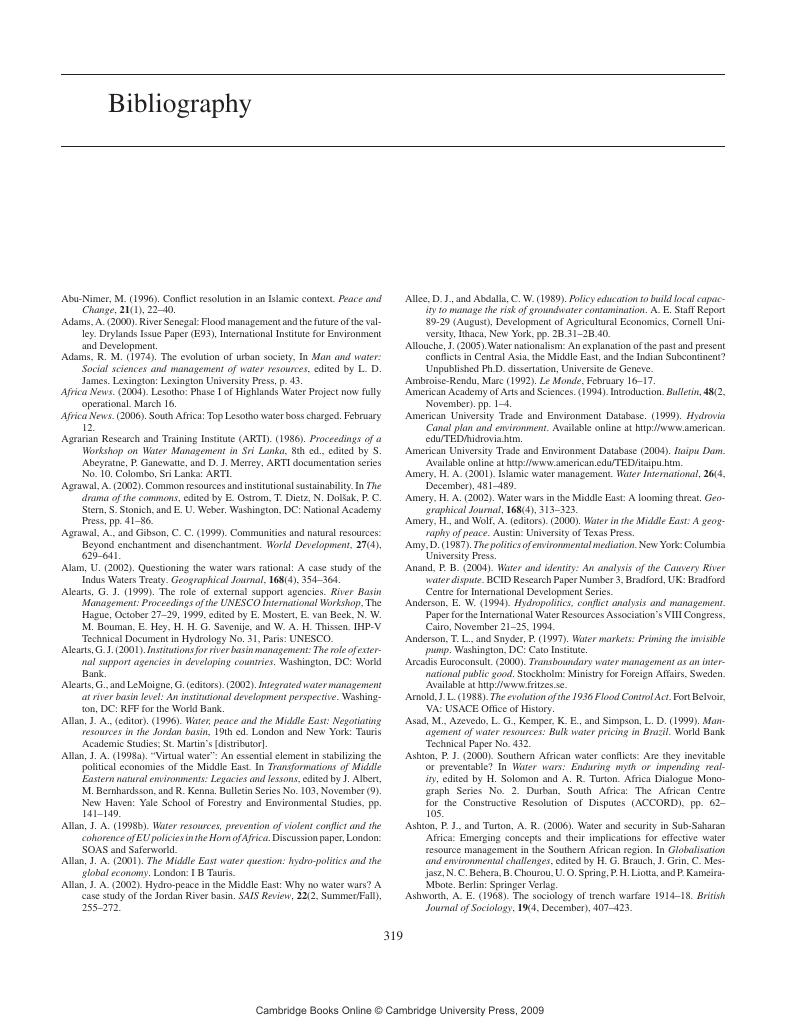Book contents
- Frontmatter
- Contents
- List of Figures
- List of Tables
- List of Sidebars
- Foreword
- Acknowledgments
- Special Contributors
- Introduction
- A Note on the OSU Transboundary Freshwater Dispute Database
- 1 Background, trends, and concepts
- 2 Water wars, water reality: Reframing the debate on transboundary water disputes, hydropolitics, and preventive hydrodiplomacy
- 3 Water conflict management: Theory and practice
- 4 Crafting institutions: Law, treaties, and shared benefits
- 5 Public participation, institutional capacity, and river basin organizations for managing conflict
- 6 Lessons learned: Patterns and issues
- 7 Water conflict prevention and resolution: Where to from here?
- Appendices
- Bibliography
- Author Index
- Subject Index
- References
Bibliography
Published online by Cambridge University Press: 04 August 2010
- Frontmatter
- Contents
- List of Figures
- List of Tables
- List of Sidebars
- Foreword
- Acknowledgments
- Special Contributors
- Introduction
- A Note on the OSU Transboundary Freshwater Dispute Database
- 1 Background, trends, and concepts
- 2 Water wars, water reality: Reframing the debate on transboundary water disputes, hydropolitics, and preventive hydrodiplomacy
- 3 Water conflict management: Theory and practice
- 4 Crafting institutions: Law, treaties, and shared benefits
- 5 Public participation, institutional capacity, and river basin organizations for managing conflict
- 6 Lessons learned: Patterns and issues
- 7 Water conflict prevention and resolution: Where to from here?
- Appendices
- Bibliography
- Author Index
- Subject Index
- References
Summary

- Type
- Chapter
- Information
- Managing and Transforming Water Conflicts , pp. 319 - 334Publisher: Cambridge University PressPrint publication year: 2009

